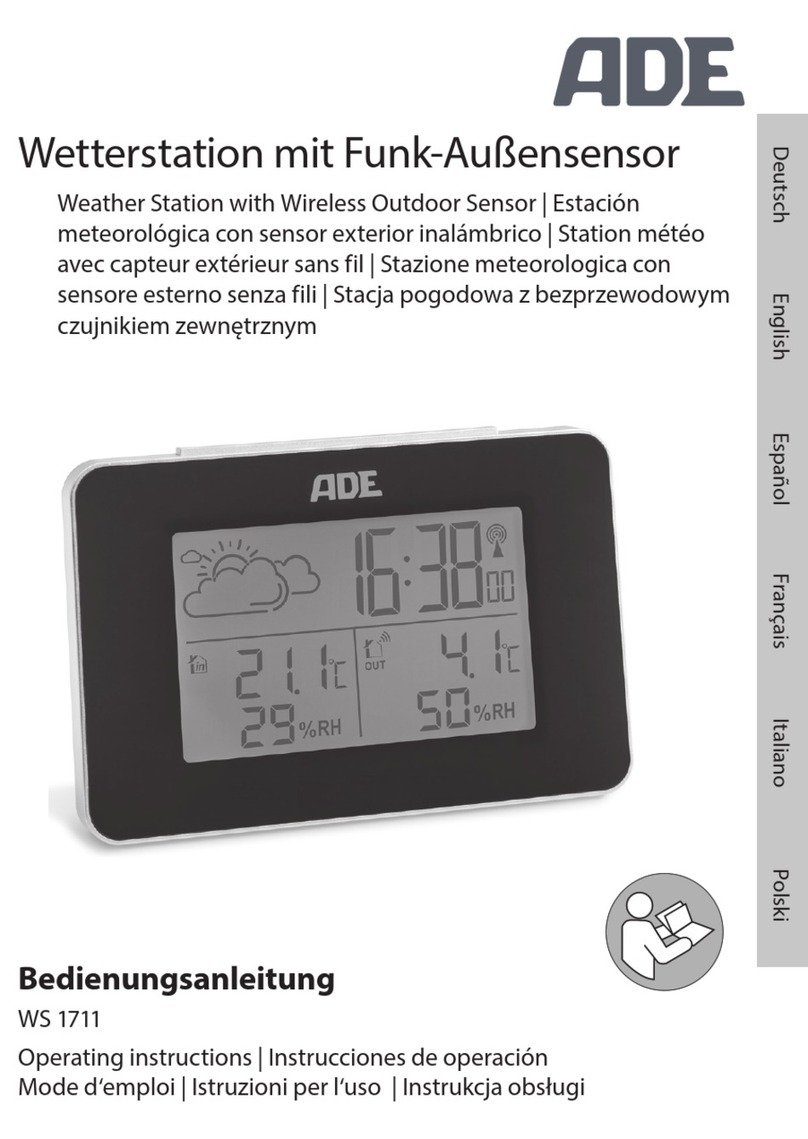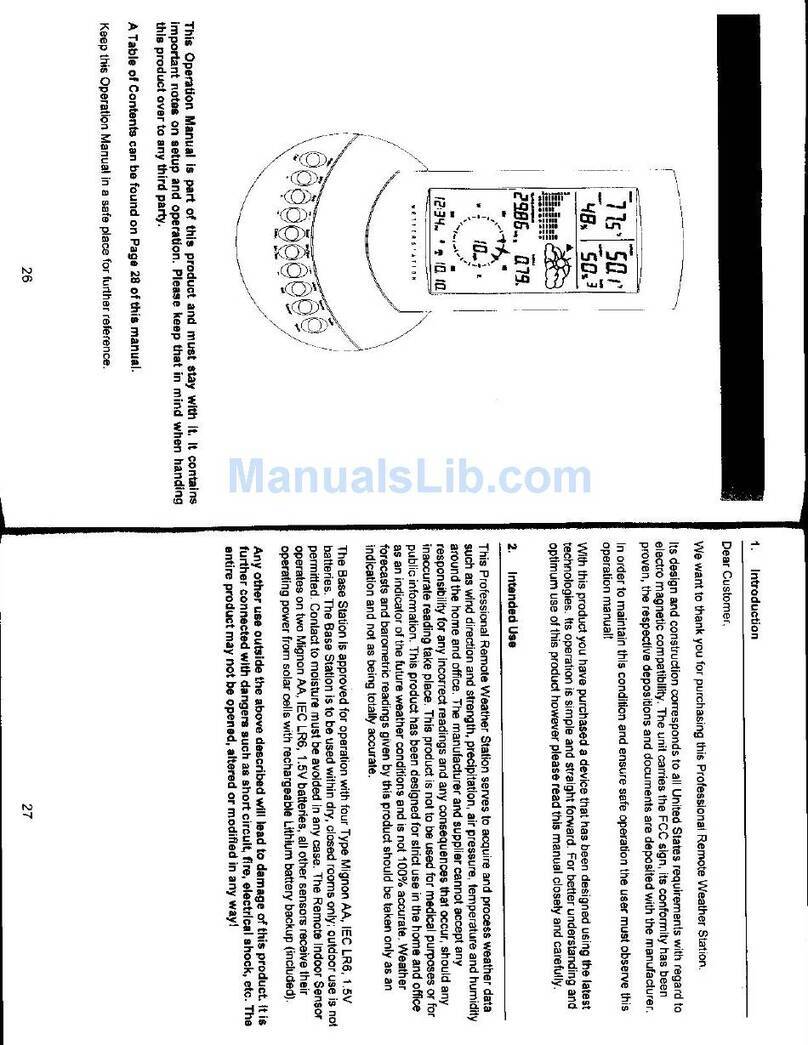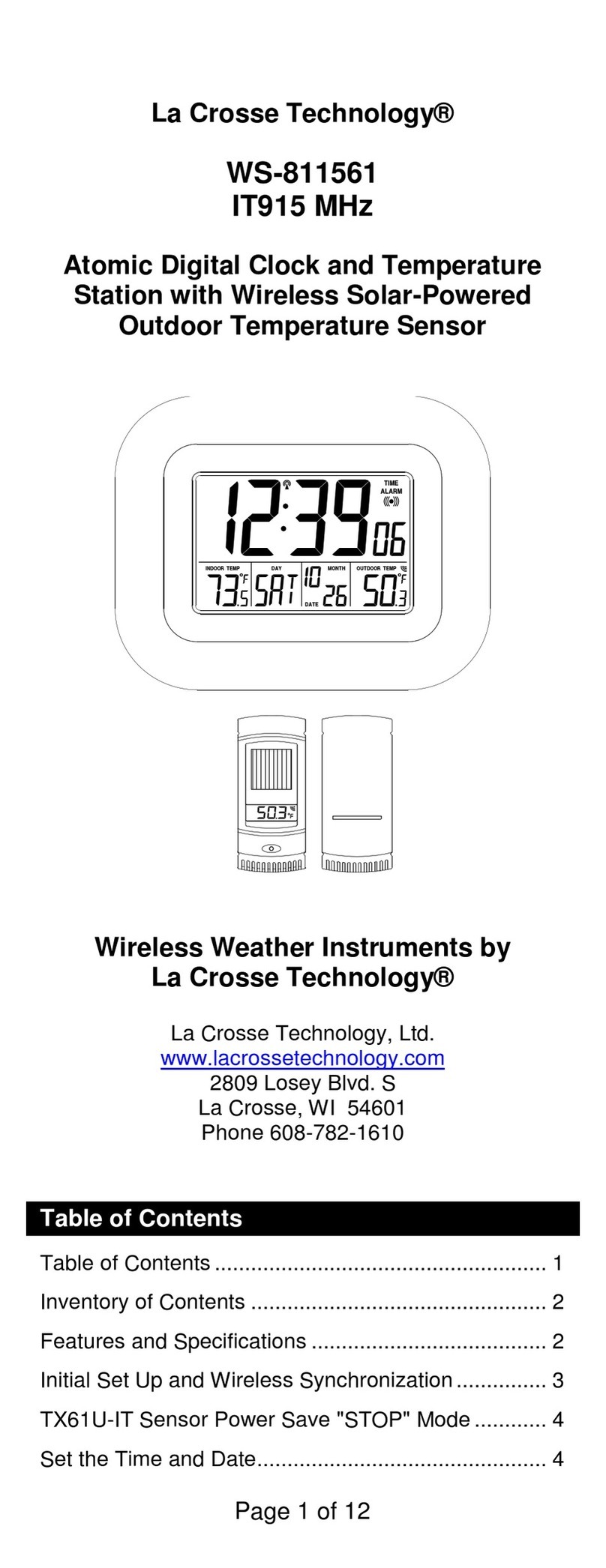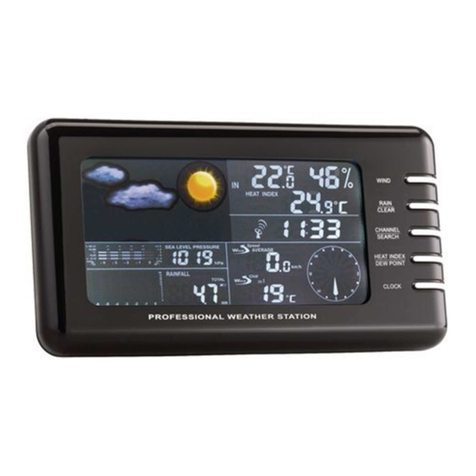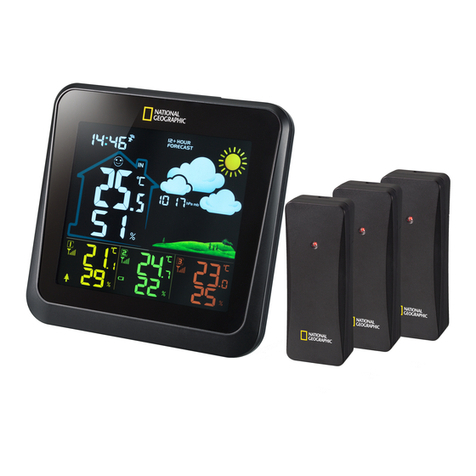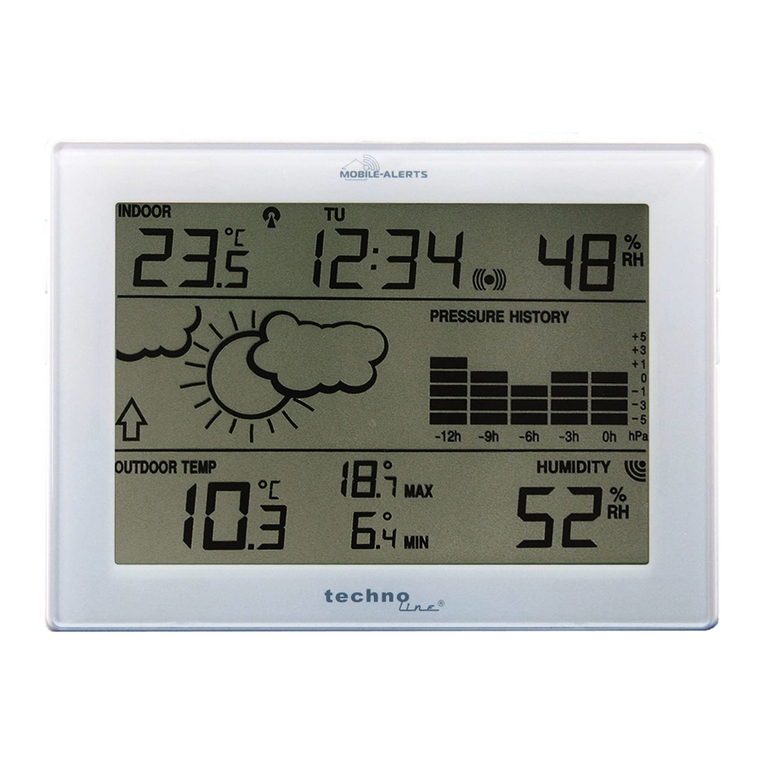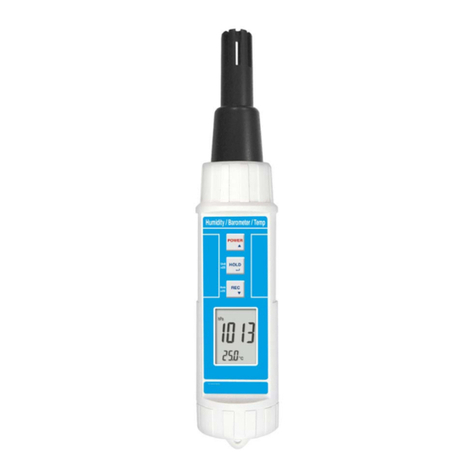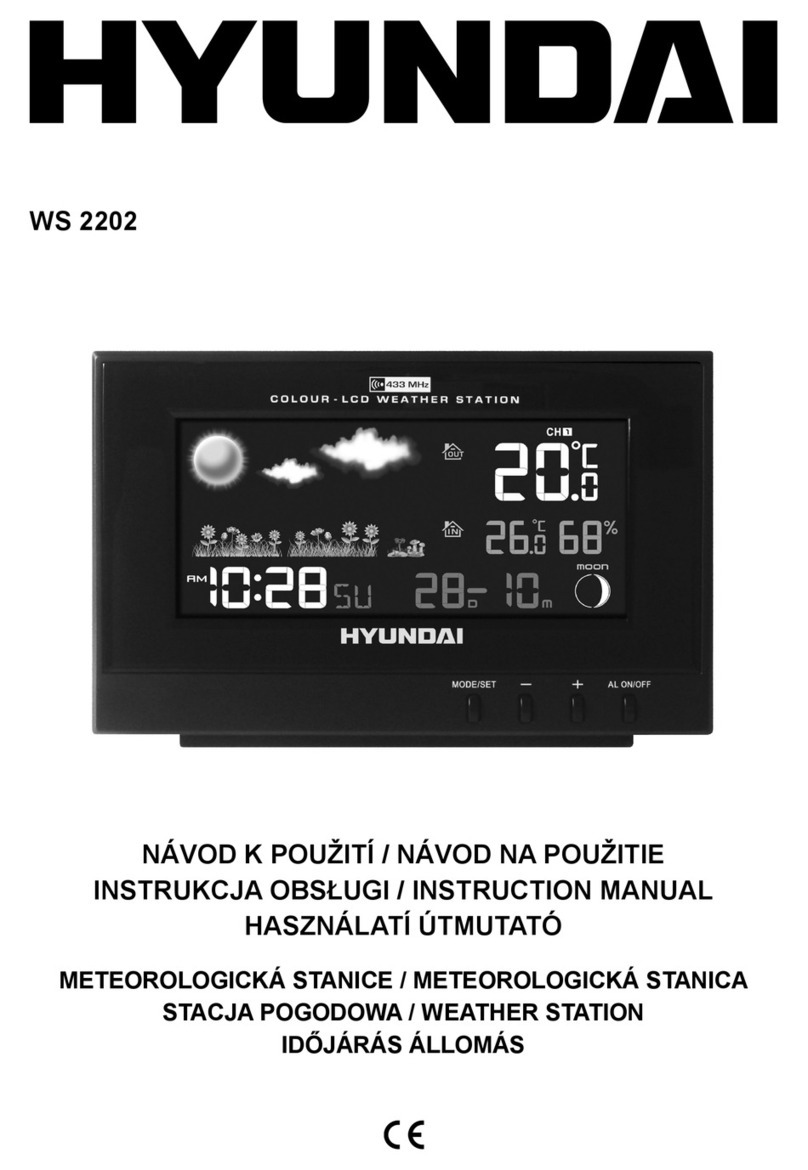Solar Powered Wireless Wi-Fi Weather Station
TP3000WC Operation Manual
About this manual
Thank you and congratulations on selecting this professional weather station! We are sure you
will enjoy the benefits of accurate weather readings and the precise network time information
that this weather station offers. This manual will guide you step-by-step through setting up your
device. Use this manual to become familiar with your ProWeatherStation, and save it for future
reference.
Glossary of Common Terms
LCD
“LCD” is an acronym for ”Liquid Crystal Display”. This is a common type of display screen
used in televisions, computers, watches, and digital clocks.
BAROMETER & BAROMETRIC PRESSURE
A barometer is a device that measures the pressure of the air pushing on it—this
measurement is called the barometric pressure. We don’t actually feel the barometric
pressure because the air pressure is pushing equally in every direction.
RELATIVE AIR PRESSURE
Relative air pressure is the same as the barometric pressure. The calculation of relative air
pressure is a combination of the absolute air pressure and the altitude.
ABSOLUTE AIR PRESSURE
Absolute air pressure is the actual air pressure on the barometer without regard to altitude.
INCHES OF MERCURY (inHg)
Inches of Mercury is the common unit of measurement for air pressure in the United States.
HECTOPASCALS (hPa)
Hectopascals are the common units of measurement for air pressure in the International
System (SI) of measurement. The hectopascal holds the same value
Important Note:
The ProWeatherStation TP3000WC comes fully assembled for ease of use. The Outdoor
Sensor array runs mainly on solar power which charges a super capacitor located inside the
unit, but has 2 AA batteries for backup power when needed (ie; solar panel shaded or covered
with snow). The outdoor sensor array communicates with the display console over a 433Mhz
RF signal which sends the data to the display console about every 48 seconds. The display
console can be run on batteries to just display the weather readings or it can be powered using
the included 5V adapter to enable the WiFi capabilities of the display console. Once the unit is
connected to a local WiFi network the display console can upload data automatically to
Weather Underground without the need for a PC and can also be accessed from a PC running
the WeatherSmart Wifi software.
